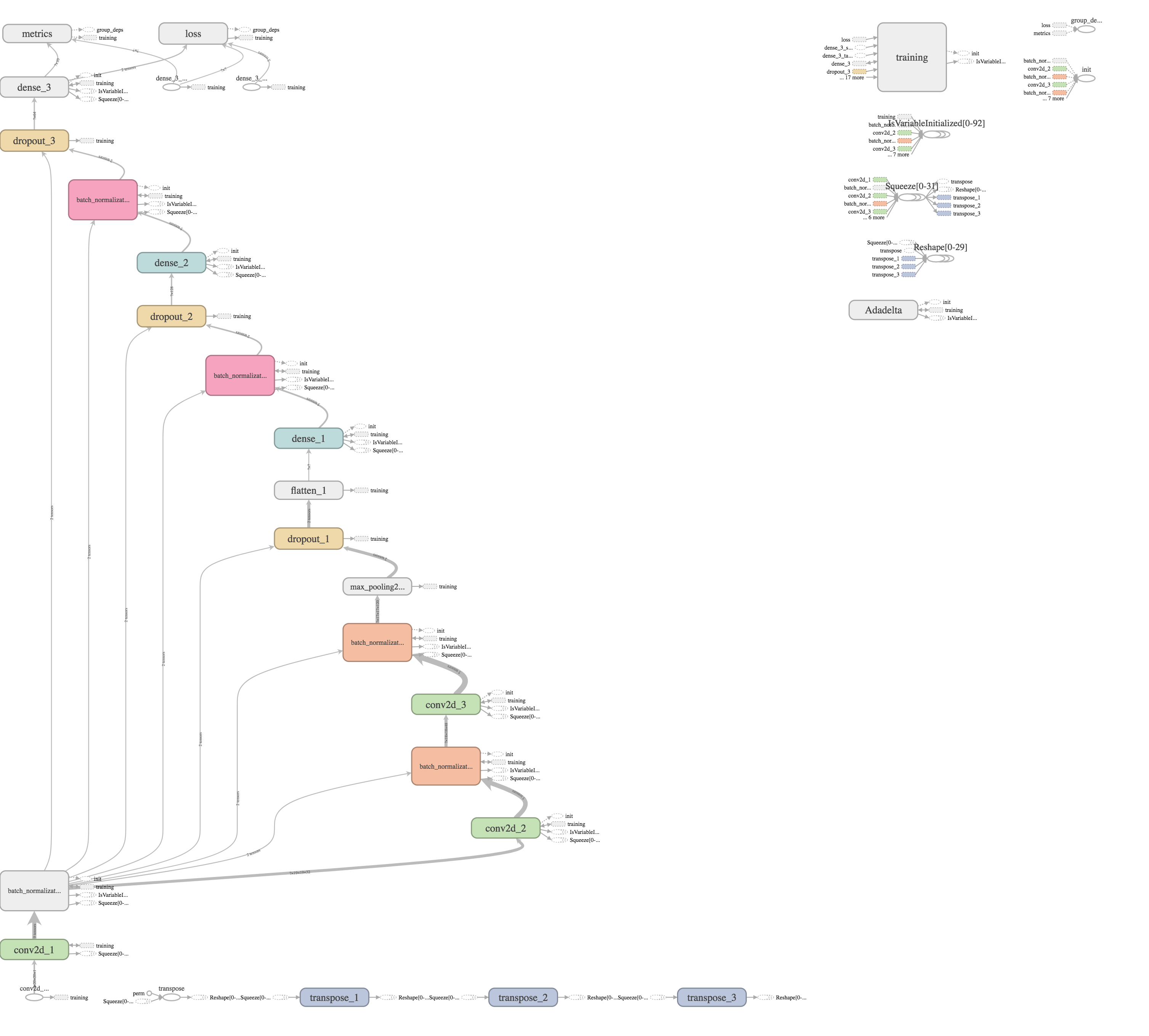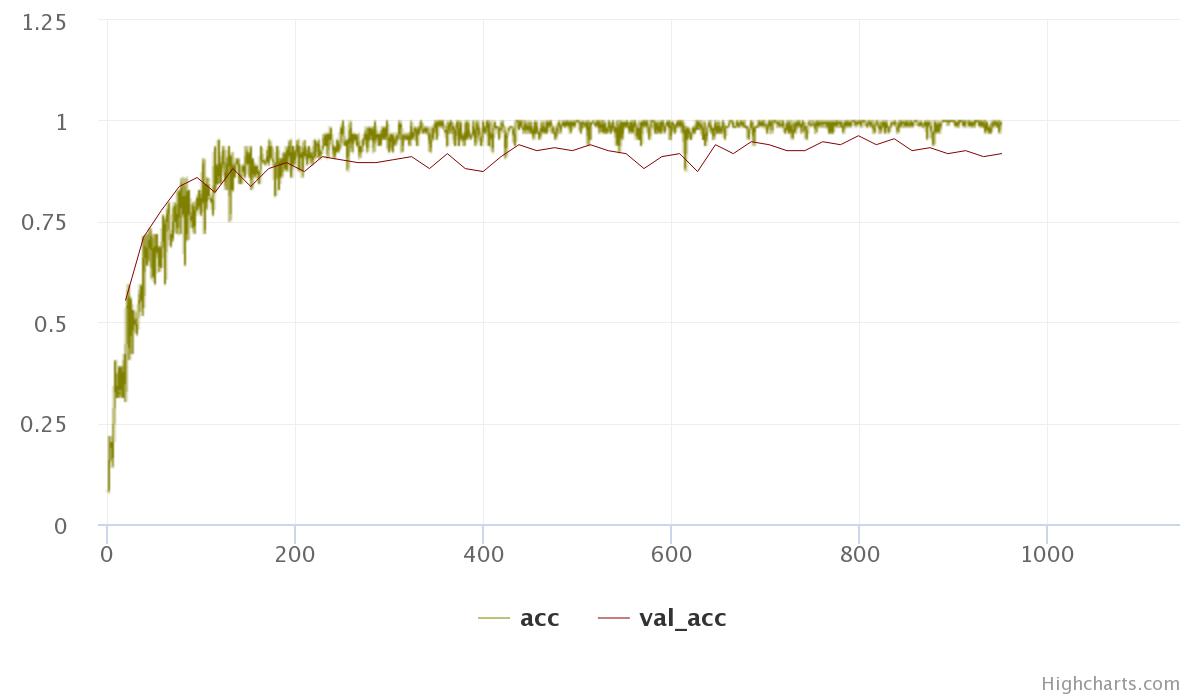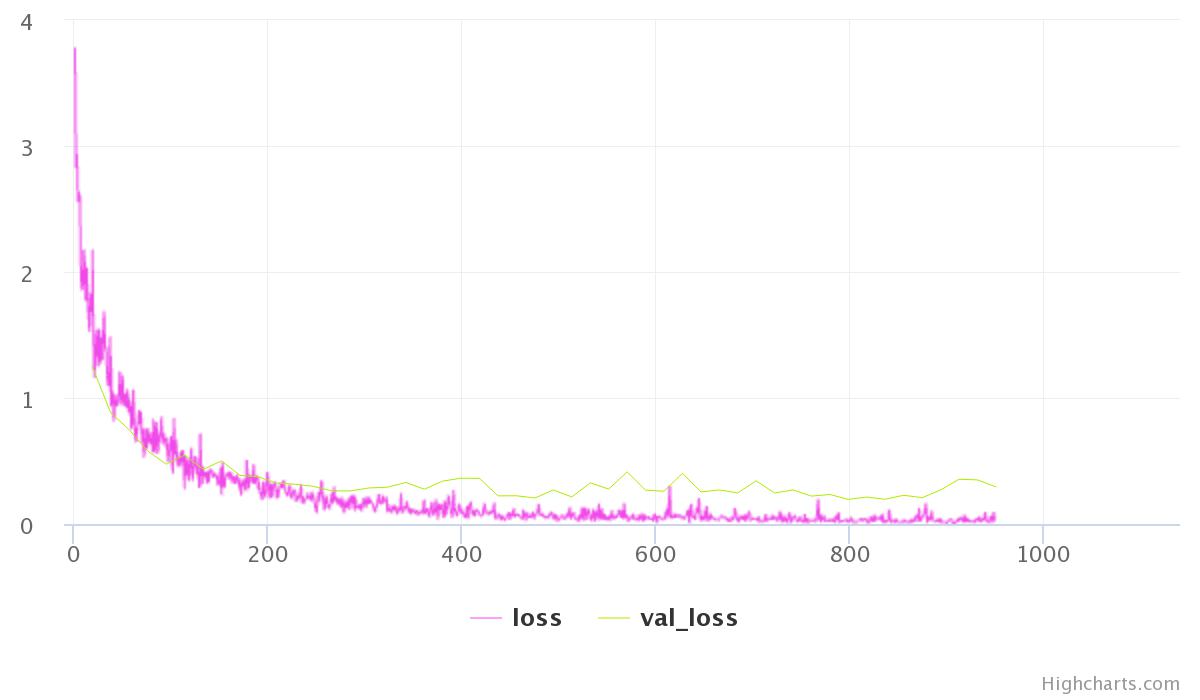Dataset: free-spoken-digit-dataset (FSDD)
The data is provided as 50 audio samples (WAV files) of each digit per person, and 3 people have contributed to the official project.
Total data = 1500 audio samples in .wav format.
We split the data as 90% train - 10% test.
-
Simple Neural Network
- Load the wav file as a NUMPY array, and feed this numpy array to a simple multi-layer perceptron.
- When we convert a WAV file to a NUMPY array, the data gets stored as a 1-D matrix. The length of this array is not specific, andit is highly dependent on the data.
- Due to this, the first layer of the MLP will have ~10000 neurons. Further calculations will add extreme complexity.
-
Spectrogram
- Convert the wav data into a spectrogram (image file) of size (64*64)
- Feed the image file to a simple Neural Network with 4096 neurons in the first layer.
- This is a good approach, but the number of neurons are large, and it does not seem logical to flatten out an image and feed it to a simple NN. We can do better.
- Based on point 3 above, we can feed this 64*64 image to a simple Convolutional Neural Network.
- Every audio willl be converted into a simple 2-D image, and this image will be fed to a CNN. This will speed up the training, and as CNNs are flawless in simple image recognition, we will definitely get a good output.
-
Mel-Frequency Cepstrum Coefficient
Here's what Wikipedia has to say about MFCC -
In sound processing, the mel-frequency cepstrum (MFC) is a representation of the short-term power spectrum of a sound, based on a linear cosine transform of a log power spectrum on a nonlinear mel scale of frequency Mel-frequency cepstral coefficients (MFCCs) are coefficients that collectively make up an MFC. They are derived from a type of cepstral representation of the audio clip (a nonlinear "spectrum-of-a-spectrum"). The difference between the cepstrum and the mel-frequency cepstrum is that in the MFC, the frequency bands are equally spaced on the mel scale, which approximates the human auditory system's response more closely than the linearly-spaced frequency bands used in the normal cepstrum. This frequency warping can allow for better representation of sound, for example, in audio compression.- MFCC is a better representation of sound. And it can be treated like an image for all practical purposes for training.
- Thus, I think using the MFCC representation of the WAV files is the best approach.
We move forward with the MFCC approach
We use Keras for the model building.
-
Model Hyperparameters
- Optimizer - Adadelta
- Activation - ReLU
- Number of epochs - 50
- Batch Size - 64
- Learning rate - Adadelta default
- Loss - Categorical Crossentropy
- Optimizer - Adadelta
-
Model Structure
- 3 convolutional layers
- 1 Max Pooling Layer
- 3 dense layers (MLP)
- Softmax Activation for output
- BatchNormalization Layer after every Conv Layer and Dense Layer.
- Dropout for every layer of MLP.

Tensorboard Visualisation of Model
- Accuracy
- Loss
We get 98% validation accuracy!
We use the test data to check the model performance on new data. Based on the results, we get 97% accuracy!
precision recall f1-score support
0 1.00 0.84 0.91 19
1 0.87 0.87 0.87 15
2 1.00 1.00 1.00 23
3 0.91 1.00 0.95 10
4 1.00 1.00 1.00 10
5 1.00 1.00 1.00 23
6 1.00 1.00 1.00 13
7 0.93 1.00 0.96 13
8 1.00 1.00 1.00 14
9 0.91 1.00 0.95 10
avg / total 0.97 0.97 0.97 150
We have thus trained a Neural Network to correctly classify spoken digits.


